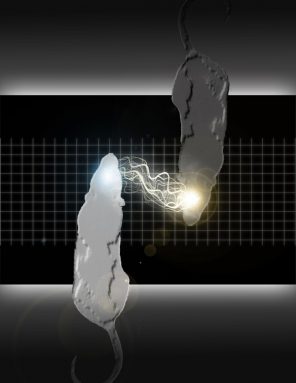Brain to brain
Rats brains signaled each other through computers

It sounds like science fiction: Scientists used electronics to link the brains of two rats and then showed that one animal could share information. Oh, and the rodents sometimes communicated long distance — over the Internet. A sender was in Brazil, the receiver animal in North Carolina.
Experiments like this may help scientists understand how the human brain is put together, Miguel Nicolelis told Science News. The study’s leader, he is a neuroscientist at Duke University in Raleigh, N.C. Neuroscientists study how behavior may be linked to the structure and function of the brain. The new experiment may even help researchers build an organic computer — one that connects many brains, instead of processors.
Not all scientists agree. Among them is Lee Miller, a neuroscientist at Northwestern University in Evanston, Ill. He told Science News that the experiment is interesting but doesn’t have a practical use. He doesn’t believe it will help researchers improve their understanding of links between the brain and other parts of the body.
Neuroscientists study electrical signals in the brain to understand how the body works. Such research has led to new technologies. These include artificial limbs that can be controlled by computer chips implanted in the brain.
In the new rat study, Nicolelis and his coworkers found a way to gather information from the brain of one rat and send it to the brain of another. The team trained the first rat to push a small lever. When it did this correctly, it received a reward. The researchers called this animal the “encoder.” A tiny computer chip placed in this rat’s brain recorded activity there every time the animal pushed the lever correctly.
A second rat, the “decoder,” also had a chip in its brain. The team taught this animal to push a particular lever when it received an electrical signal from the chip in its brain.
Afterward, the team hooked up the rats. When the “encoder” pushed one of two levers, the chip in its brain sent information about this rat’s brain activity to a nearby computer. That computer then sent information to the chip in the second animal’s brain. That info was about the measured brain activity in the first rat. If the second rat understood the message correctly, it was supposed to push the same lever as the encoder had.
If the decoder rat pushed levers at random, one might expect it to be right half the time. In fact, the wired rats were right a bit more than half the time. That suggests the rats were actually sending information. But it’s hard to be sure because the rats also had practiced pushing the right lever.
Power Words
neuroscience The study of the structure and function of the brain and the nervous system.
nervous system The network of nerve cells and fibers that transmits nerve impulses between parts of the body.
nerve cells Special cells that transmit electrical impulses. They permit the brain to communicate with the rest of the body.
technology The application of scientific knowledge for practical purposes, especially in industry







